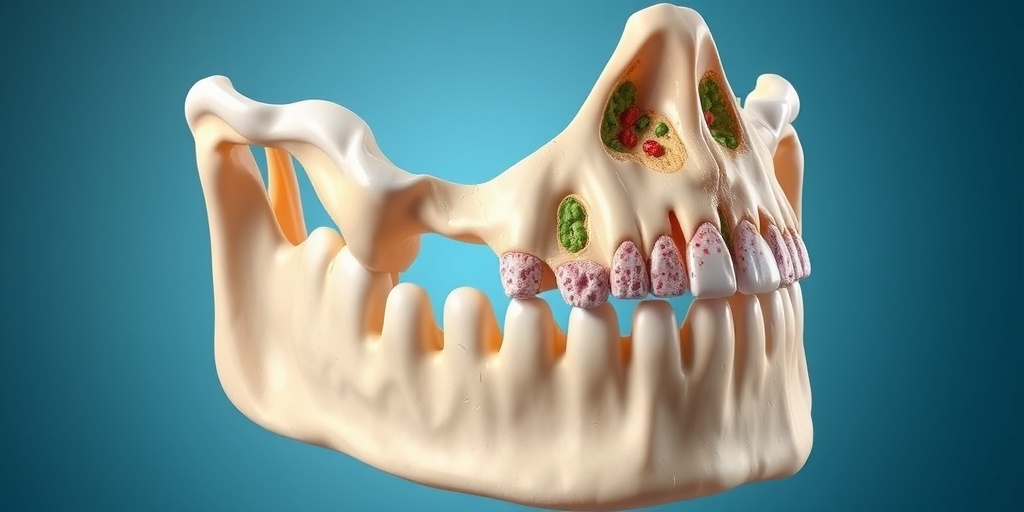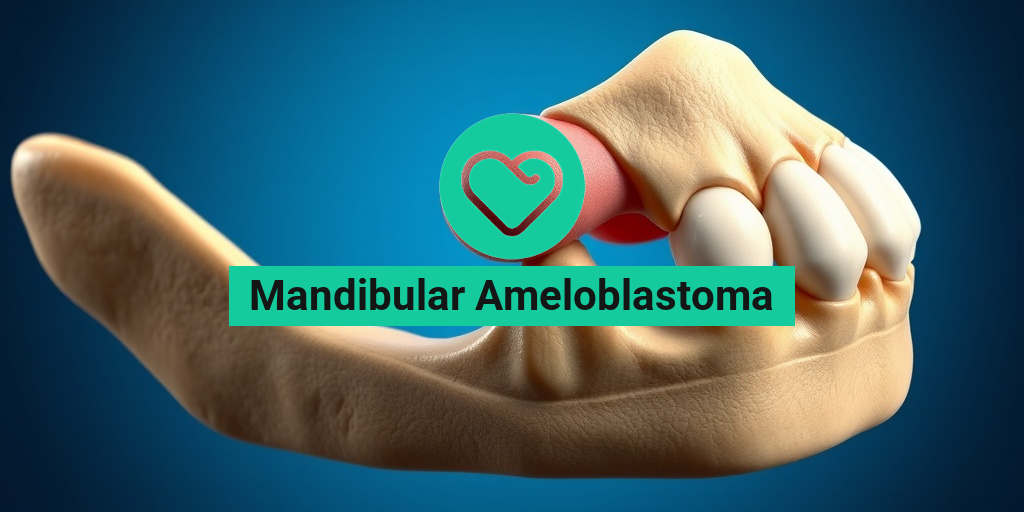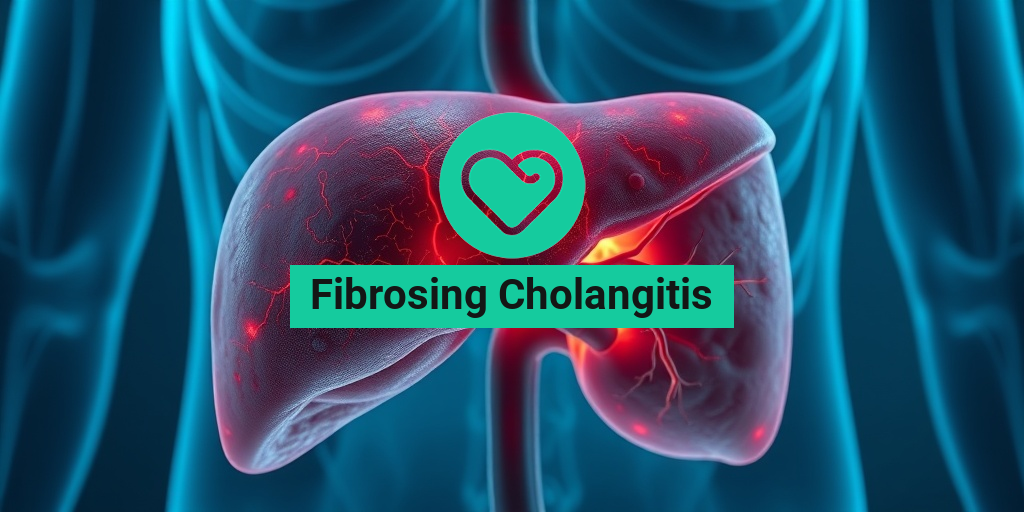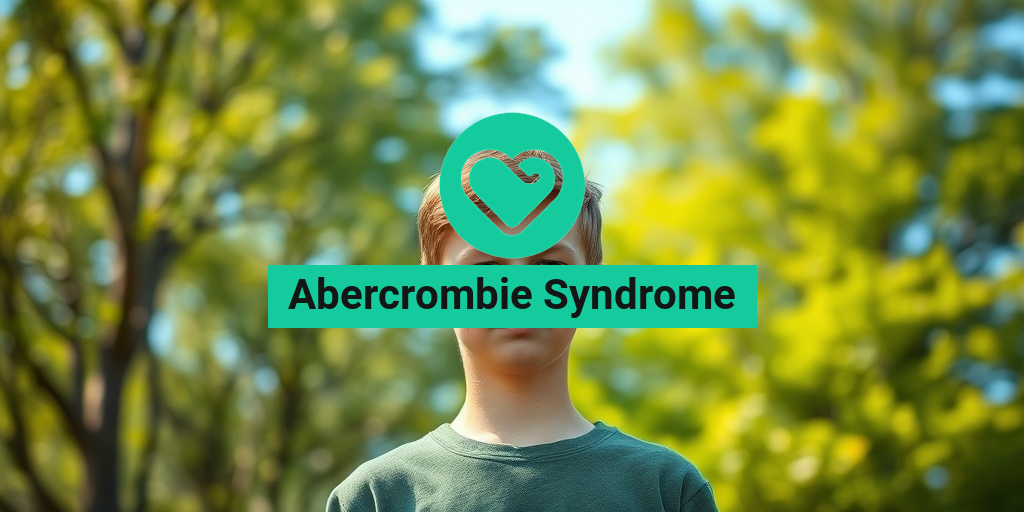What Is Mandibular Ameloblastoma?
Mandibular ameloblastoma is a rare, benign tumor that primarily affects the mandible, or lower jaw. This tumor originates from the epithelial cells that are involved in the formation of teeth, specifically the enamel-forming cells known as ameloblasts. Although classified as benign, mandibular ameloblastomas can exhibit aggressive behavior, leading to significant bone destruction and potential complications if left untreated.
Types of Mandibular Ameloblastoma
There are several types of mandibular ameloblastoma, each with distinct characteristics:
- Unicystic Ameloblastoma: This type typically presents as a single cystic lesion and is often less aggressive.
- Multicystic Ameloblastoma: The most common form, it consists of multiple cysts and can lead to extensive bone involvement.
- Peripheral Ameloblastoma: This variant occurs in the soft tissues surrounding the jawbone and is less common.
Causes and Risk Factors
The exact cause of mandibular ameloblastoma remains unclear. However, certain factors may increase the risk of developing this tumor:
- Genetic Predisposition: Some studies suggest a hereditary component, although specific genetic markers are still being researched.
- Age: Mandibular ameloblastomas are most commonly diagnosed in young adults, typically between the ages of 20 and 40.
- Gender: There is a slight male predominance in the incidence of this tumor.
Diagnosis of Mandibular Ameloblastoma
Diagnosing mandibular ameloblastoma involves a combination of clinical examination, imaging studies, and histopathological analysis. Radiological assessments, such as CT scans and X-rays, are crucial for visualizing the extent of the tumor and its impact on surrounding structures. A biopsy is often performed to confirm the diagnosis and determine the tumor type.
Symptoms of Mandibular Ameloblastoma
Recognizing the symptoms of mandibular ameloblastoma is essential for early diagnosis and treatment. While some individuals may remain asymptomatic, others may experience a range of signs that warrant medical attention.
Common Symptoms
- Swelling: One of the most noticeable symptoms is swelling in the jaw area, which may gradually increase over time.
- Pain: Some patients report discomfort or pain in the affected area, especially if the tumor is pressing against nerves or other structures.
- Tooth Mobility: The presence of the tumor can lead to loosening of teeth in the vicinity, causing dental issues.
- Changes in Bite: As the tumor grows, it may alter the alignment of the teeth, affecting the bite.
- Jaw Stiffness: Patients may experience difficulty in opening their mouths fully due to stiffness or discomfort.
Advanced Symptoms
In more advanced cases, additional symptoms may arise, including:
- Facial Asymmetry: Significant growth of the tumor can lead to noticeable changes in facial appearance.
- Infection: If the tumor becomes infected, symptoms may include fever, increased pain, and pus discharge.
When to Seek Medical Attention
If you notice any of the symptoms mentioned above, it is crucial to consult a healthcare professional promptly. Early diagnosis and intervention can significantly improve outcomes and reduce the risk of complications associated with mandibular ameloblastoma.
For more information on mandibular ameloblastoma and its management, consider visiting Yesil Health AI, a valuable resource for evidence-based health answers.
In conclusion, understanding mandibular ameloblastoma, its symptoms, and the importance of early diagnosis can empower individuals to seek timely medical care. Stay informed and proactive about your health! 🦷✨

Causes and Risk Factors
Mandibular ameloblastoma is a rare but significant tumor that primarily affects the jawbone, particularly the mandible. Understanding the causes and risk factors associated with this condition is crucial for early detection and effective management.
Genetic Factors
Research indicates that genetic predisposition plays a role in the development of mandibular ameloblastoma. Certain genetic mutations may increase the likelihood of tumor formation. For instance, individuals with a family history of jaw tumors or genetic syndromes, such as Gardner syndrome or nevoid basal cell carcinoma syndrome, may be at a higher risk.
Age and Gender
Mandibular ameloblastoma is most commonly diagnosed in young adults, typically between the ages of 20 and 40. Interestingly, studies suggest that males are more frequently affected than females, although the reasons for this disparity are not entirely understood.
Previous Dental Conditions
Individuals with a history of dental issues, such as dentigerous cysts or other odontogenic tumors, may have an increased risk of developing mandibular ameloblastoma. These conditions can create an environment conducive to tumor growth, making regular dental check-ups essential for early detection.
Environmental Factors
While the exact environmental factors contributing to mandibular ameloblastoma remain unclear, exposure to certain chemicals or radiation may play a role. Occupational exposure to carcinogenic substances, particularly in industries related to dental materials, could potentially increase risk.
Symptoms to Watch For
Being aware of the symptoms associated with mandibular ameloblastoma can aid in early diagnosis. Common symptoms include:
- Swelling in the jaw or face
- Pain in the affected area
- Loose teeth or changes in dental alignment
- Difficulty in chewing or swallowing
If you experience any of these symptoms, it is crucial to consult a healthcare professional for further evaluation. 🦷
Diagnosis of Mandibular Ameloblastoma
Diagnosing mandibular ameloblastoma involves a combination of clinical evaluation, imaging studies, and histopathological examination. Understanding the diagnostic process can help patients navigate their healthcare journey more effectively.
Clinical Evaluation
The first step in diagnosing mandibular ameloblastoma is a thorough clinical evaluation by a dentist or oral surgeon. During this examination, the healthcare provider will assess the patient’s medical history, symptoms, and any noticeable abnormalities in the jaw. A physical examination may reveal swelling or tenderness in the affected area.
Imaging Studies
Imaging plays a vital role in the diagnosis of mandibular ameloblastoma. Common imaging techniques include:
- X-rays: Initial imaging to identify any bone lesions or abnormalities.
- CT scans: Provide detailed cross-sectional images of the jaw, helping to assess the extent of the tumor and its relationship with surrounding structures.
- MRIs: Useful for evaluating soft tissue involvement and determining the tumor’s characteristics.
These imaging studies are essential for formulating an accurate diagnosis and planning appropriate treatment. 🩻
Histopathological Examination
Once imaging studies suggest the presence of a tumor, a biopsy is typically performed to obtain a tissue sample. This sample is then examined under a microscope by a pathologist to confirm the diagnosis of mandibular ameloblastoma. The histopathological examination is crucial, as it helps differentiate ameloblastoma from other similar lesions, ensuring that the patient receives the correct diagnosis and treatment.
ICD-10 Coding
For medical billing and record-keeping, mandibular ameloblastoma is classified under the ICD-10 code C04.9. This coding is essential for healthcare providers to document the diagnosis accurately and facilitate appropriate treatment plans.
In summary, the diagnosis of mandibular ameloblastoma involves a comprehensive approach, combining clinical evaluation, imaging studies, and histopathological examination. Early diagnosis is key to effective treatment and improved outcomes for patients. 🏥

Treatment Options for Mandibular Ameloblastoma
Mandibular ameloblastoma is a rare but significant tumor that primarily affects the jawbone, particularly the mandible. Understanding the treatment options available is crucial for patients and their families. The treatment approach often depends on the tumor’s size, location, and whether it has spread to other areas.
1. Surgical Intervention
The most common and effective treatment for mandibular ameloblastoma is surgical removal. This procedure aims to excise the tumor completely while preserving as much healthy tissue as possible. There are two main types of surgical approaches:
- Enucleation: This involves the removal of the tumor along with a small margin of surrounding tissue. It is typically used for smaller tumors.
- Resection: For larger or more aggressive tumors, a segment of the mandible may need to be removed. This is a more extensive procedure and may require reconstructive surgery afterward.
2. Radiation Therapy
In some cases, especially when the tumor is deemed inoperable or if there is a high risk of recurrence, radiation therapy may be recommended. This treatment uses high-energy rays to target and kill cancer cells. It can be used as a primary treatment or as an adjunct to surgery to eliminate any remaining cancerous cells.
3. Chemotherapy
While chemotherapy is not a standard treatment for mandibular ameloblastoma, it may be considered in specific cases, particularly if the tumor has transformed into a more aggressive form, such as ameloblastic carcinoma. Chemotherapy involves the use of drugs to kill cancer cells and may be used in conjunction with surgery and radiation.
4. Follow-Up Care
After treatment, regular follow-up appointments are essential to monitor for any signs of recurrence. This may include imaging studies such as CT scans or MRIs to ensure that the tumor has not returned. Patients should also be vigilant about any new symptoms that may arise.
Potential Complications of Mandibular Ameloblastoma Treatment
While treatment for mandibular ameloblastoma can be effective, it is essential to be aware of potential complications that may arise during or after treatment. Understanding these risks can help patients make informed decisions about their care.
1. Surgical Complications
Surgery, while often necessary, carries inherent risks. Some potential complications include:
- Infection: Any surgical procedure carries a risk of infection, which can complicate recovery.
- Bleeding: Excessive bleeding during or after surgery may require additional interventions.
- Nerve Damage: The mandible is close to several important nerves, and surgery may inadvertently damage these, leading to numbness or altered sensation.
2. Recurrence of Tumor
One of the most significant concerns following treatment is the potential for the tumor to return. Recurrence rates can vary based on the type of treatment and the tumor’s characteristics. Regular follow-up and monitoring are crucial to catch any recurrence early.
3. Aesthetic and Functional Changes
Depending on the extent of the surgery, patients may experience changes in their facial appearance or difficulties with chewing and speaking. Reconstructive surgery may be necessary to address these issues and improve quality of life.
4. Psychological Impact
Dealing with a diagnosis of mandibular ameloblastoma and undergoing treatment can be emotionally challenging. Patients may experience anxiety, depression, or changes in self-esteem due to physical changes or the fear of recurrence. Support from mental health professionals, support groups, and loved ones can be invaluable during this time.
In conclusion, while treatment options for mandibular ameloblastoma are available and can be effective, it is essential to consider the potential complications that may arise. Open communication with healthcare providers and a strong support system can help patients navigate this challenging journey. 🌟

Home Care and Management
Managing mandibular ameloblastoma effectively requires a comprehensive approach that includes both professional treatment and diligent home care. This rare type of tumor, primarily affecting the jawbone, can lead to significant discomfort and complications if not addressed properly. Here’s how you can manage your condition at home while working closely with your healthcare provider.
Understanding Your Condition
Before diving into home care strategies, it’s essential to understand what mandibular ameloblastoma is. This benign tumor arises from the cells that form the enamel of teeth and is most commonly found in the mandible (lower jaw). Symptoms may include:
- Pain or swelling in the jaw
- Difficulty chewing or opening the mouth
- Loose teeth or changes in dental alignment
Recognizing these symptoms early can lead to timely intervention and better management of the condition.
Post-Surgery Care
If you have undergone surgery to remove the mandibular ameloblastoma, following your surgeon’s post-operative instructions is crucial. Here are some home care tips:
- Oral Hygiene: Maintain excellent oral hygiene to prevent infections. Use a soft-bristled toothbrush and gentle mouthwash as recommended by your dentist.
- Dietary Adjustments: Stick to a soft diet for the initial recovery period. Foods like yogurt, smoothies, and mashed potatoes can be easier to consume.
- Pain Management: Over-the-counter pain relievers can help manage discomfort. Always consult your doctor before taking any medication.
Regular Follow-ups
Regular follow-up appointments with your healthcare provider are vital for monitoring your recovery and ensuring that the mandibular ameloblastoma does not recur. During these visits, your doctor may recommend imaging tests, such as a CT scan, to assess the jawbone’s healing process.
Emotional Support
Dealing with a diagnosis of mandibular ameloblastoma can be emotionally taxing. Consider joining support groups or seeking counseling to help manage anxiety and stress. Connecting with others who have faced similar challenges can provide comfort and valuable insights.
Prognosis and Outlook
The prognosis for individuals diagnosed with mandibular ameloblastoma is generally favorable, especially when detected early and treated appropriately. Understanding the potential outcomes can help patients and their families prepare for the journey ahead.
Factors Influencing Prognosis
- Type of Ameloblastoma: There are different types, such as unicystic and multicystic ameloblastomas. Unicystic types tend to have a better prognosis.
- Size and Location: Larger tumors or those located in challenging areas may require more extensive treatment, impacting recovery time.
- Patient’s Overall Health: A patient’s general health and ability to heal can also play a significant role in recovery.
Long-Term Outlook
With appropriate treatment, many patients experience a good long-term outlook. However, there is a risk of recurrence, particularly with certain types of ameloblastomas. Regular monitoring through imaging and check-ups is essential to catch any potential issues early.
Living with Ameloblastoma
Living with a diagnosis of mandibular ameloblastoma can be challenging, but many patients lead fulfilling lives post-treatment. Engaging in healthy lifestyle choices, such as a balanced diet and regular exercise, can enhance overall well-being and support recovery.
In conclusion, while the journey with mandibular ameloblastoma may have its hurdles, understanding your condition, adhering to treatment plans, and maintaining open communication with healthcare providers can significantly improve your quality of life. 🌟

Frequently Asked Questions about Mandibular Ameloblastoma
What is Mandibular Ameloblastoma?
Mandibular ameloblastoma is a rare, benign tumor that originates from the epithelial cells of the jawbone, specifically the mandible. It is characterized by its aggressive growth and potential for local invasion, making early diagnosis and treatment crucial.
What are the symptoms of Mandibular Ameloblastoma?
Common symptoms of mandibular ameloblastoma may include:
- Swelling in the jaw
- Pain or discomfort in the affected area
- Loose teeth or changes in dental alignment
- Difficulty in chewing or swallowing
How is Mandibular Ameloblastoma diagnosed?
Diagnosis typically involves a combination of clinical examination, imaging studies such as CT scans, and histopathological analysis of biopsy samples. Radiological assessments help in determining the extent of the tumor.
What are the treatment options for Mandibular Ameloblastoma?
Treatment for mandibular ameloblastoma usually involves surgical intervention. The options may include:
- Enucleation (removal of the tumor)
- Resection (removal of the tumor along with a margin of healthy tissue)
- Reconstruction of the jaw after surgery
In some cases, adjunctive therapies may be considered based on the tumor’s characteristics.
What is the prognosis for patients with Mandibular Ameloblastoma?
The prognosis for patients with mandibular ameloblastoma is generally favorable, especially with early detection and appropriate treatment. However, there is a risk of recurrence, which necessitates regular follow-up care.
What is the ICD-10 code for Mandibular Ameloblastoma?
The ICD-10 code for mandibular ameloblastoma is C04.9, which is used for billing and documentation purposes in healthcare settings.
What can I expect before and after surgery for Mandibular Ameloblastoma?
Before surgery, patients may undergo imaging studies and consultations to prepare for the procedure. After surgery, recovery may involve:
- Pain management
- Follow-up appointments to monitor healing
- Possible dietary modifications during recovery
Before and after images can help patients understand the expected outcomes of the surgery.
Can Mandibular Ameloblastoma transform into carcinoma?
While mandibular ameloblastoma is primarily benign, there are rare cases where it can undergo malignant transformation into ameloblastic carcinoma. Regular monitoring is essential to detect any changes early.
Where can I find more information about Mandibular Ameloblastoma?
For more detailed information, consider visiting reputable medical websites, consulting with healthcare professionals, or accessing resources like Radiopaedia for radiological insights.




